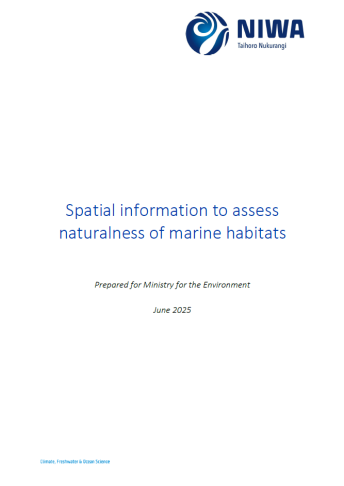New Zealand’s marine environment is shaped by a wide range of human activities, from land use and resource extraction to climate change and pollution. Yet, the full footprint of these activities and their cumulative impacts on marine ecosystems and biodiversity remain poorly understood.
This report explores the data available to represent different aspects of ‘Naturalness’, a measure of how untouched or pristine marine areas are. By mapping and categorising 56 types of marine-related activities across 11 themes, the report provides a foundation for assessing ecological condition and guiding marine ecosystem management.
This work is part of a wider plan to map human pressures to impacts on species, habitats and ecosystems, and aims to support better decision-making and more effective stewardship of New Zealand’s marine biodiversity.
New Zealand’s marine environment is shaped by a wide range of human activities, from land use and resource extraction to climate change and pollution. Yet, the full footprint of these activities and their cumulative impacts on marine ecosystems and biodiversity remain poorly understood.
This report explores the data available to represent different aspects of ‘Naturalness’, a measure of how untouched or pristine marine areas are. By mapping and categorising 56 types of marine-related activities across 11 themes, the report provides a foundation for assessing ecological condition and guiding marine ecosystem management.
This work is part of a wider plan to map human pressures to impacts on species, habitats and ecosystems, and aims to support better decision-making and more effective stewardship of New Zealand’s marine biodiversity.
